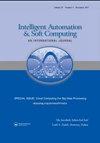通过机器学习物联网实现心电流数据的自动学习
IF 2
4区 计算机科学
Q2 Computer Science
引用次数: 4
摘要
将机器学习技术应用于物联网(IoT)数据流将有助于更好地理解、预测未来的感知,并根据这些分析做出关键决策。物联网、大数据和机器学习之间的合作可以在医疗保健、智慧城市和电信等不同领域找到。本文的目的是开发一种自动学习心电图(ECG)流数据的方法来检测任何心跳异常。一个很有前景的解决方案是使用医疗传感器,将生命体征传输到医疗计算机系统,并结合机器学习,这样临床医生就可以对患者的危急情况发出警报,并采取相应的行动。由于虚警发生的概率严重影响心律失常检测的准确性,因此将虚警控制在最低水平是最重要的因素。本文提出的方法展示了机器学习如何通过减少负面假警报来促进健康技术检测心脏病的一个例子。除了心跳异常检测阶段外,还提出并解释了心跳学习模型的各个阶段。本文章由计算机程序翻译,如有差异,请以英文原文为准。
Automated Learning of ECG Streaming Data Through Machine Learning Internet of Things
Applying machine learning techniques on Internet of Things (IoT) data streams will help achieve better understanding, predict future perceptions, and make crucial decisions based on those analytics. The collaboration between IoT, Big Data and machine learning can be found in different domains such as Health care, Smart cities, and Telecommunications. The aim of this paper is to develop a method for automated learning of electrocardiogram (ECG) streaming data to detect any heart beat anomalies. A promising solution is to use medical sensors that transfer vital signs to medical care computer systems, combined with machine learning, such that clinicians can get alerted about patient’s critical condition and act accordingly. Since the probability of false alarms pose serious impact to the accuracy of cardiac arrhythmia detection, it is the most important factor to keep false alarms to the lowest level. The proposed method in this paper demonstrates an example of how machine learning can contribute to health technologies with in detecting heart disease through minimizing negative false alarms. Stages of heartbeat learning model are proposed and explained besides the stages heartbeat anomalies detection stages.
求助全文
通过发布文献求助,成功后即可免费获取论文全文。
去求助
来源期刊

Intelligent Automation and Soft Computing
工程技术-计算机:人工智能
CiteScore
3.50
自引率
10.00%
发文量
429
审稿时长
10.8 months
期刊介绍:
An International Journal seeks to provide a common forum for the dissemination of accurate results about the world of intelligent automation, artificial intelligence, computer science, control, intelligent data science, modeling and systems engineering. It is intended that the articles published in the journal will encompass both the short and the long term effects of soft computing and other related fields such as robotics, control, computer, vision, speech recognition, pattern recognition, data mining, big data, data analytics, machine intelligence, cyber security and deep learning. It further hopes it will address the existing and emerging relationships between automation, systems engineering, system of systems engineering and soft computing. The journal will publish original and survey papers on artificial intelligence, intelligent automation and computer engineering with an emphasis on current and potential applications of soft computing. It will have a broad interest in all engineering disciplines, computer science, and related technological fields such as medicine, biology operations research, technology management, agriculture and information technology.
 求助内容:
求助内容: 应助结果提醒方式:
应助结果提醒方式:


